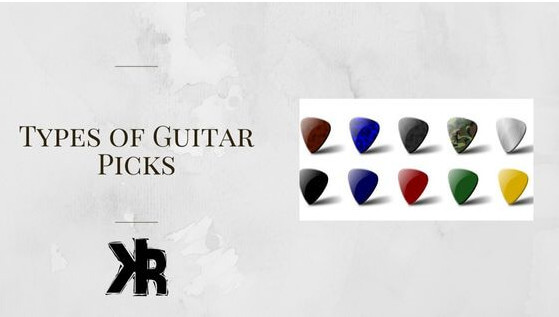Table of Contents
Choosing the right types of guitar picks can be tricky. Are you new to the instrument? You probably don’t quite realize yet how important the right pick can be to your development.
It’s one of the guitar accessories that isn’t talked about as much as others, but should be. Does this mean then that any pick will do?
The right guitar pick will make all the difference to your sound, as well as your technique. Some play styles are performed better with the right plectrum. The thickness, material, and size are all factors to consider when selecting a pick.
With so many types available, it can be difficult to know how and when to use them. But this can make a big difference to your experience as a player.
But don’t worry, we’ve got you covered! This Killer Rig guide has been designed to help you find the perfect guitar pick. And to understand why the right choice is important.
What is a Guitar Pick?
A guitar pick is a small, somewhat thin tool or accessory used to pluck or strum strings on instruments. They go by a few different names, including:
- Pick
- Plectrum
- Plectra
In the early 19th century, the plectra were made from feather quills. They were widely used until there was a shift to tortoiseshell.
The improvement in sound and stiffness was significant. And so the shell became the standard guitar pick for several years. Celluloid would replace the tortoiseshell in the 1920s. When then-inventor Tony D’Andrea introduced a new means of making guitar picks.
He went on to supply plectrum to companies like Fender, Gibson, and Martin. This new technique was far easier than harvesting turtles, but just as effective.
Today, we have many materials, and each one serves a different purpose. Guitar picks made it easier to improve playing technique and sound for musicians.
Do You Need to Use a Guitar Pick?
While a pick is not necessary for all styles of playing, it does offer a very large advantage to others. Some of the things that a guitar pick offers are:
- More defined string sound
- Louder volume
- Improved technique
When a pick is used on a string instead of fingers, it will produce more harmonics and create a more defined sound. A string plucked with a finger dampens the sound and doesn’t have the same impact to tone.
A string plucked with a guitar pick will also create more volume for much of the same reasons. When there is nothing to mute a string in any way, it will be louder.
Then there is the ability to play faster and more accurately. A pick will allow a player to run up and down the neck of a guitar with ease. This is only if it’s handled properly, though, which comes with experience.
Guitar Pick Materials
Many materials are used to make guitar picks. Each type offering players better performance, flexibility, or texture. Some of the more common materials are:
- Celluloid
- Nylon
- Delrin/Tortex
- Ultex
- Carbon Fiber
- Tusq
- Stone
- Wood
- Metal
Tortoise shell was also a guitar pick material that was used for some time in the early days. But was not included in the list as it became banned in 1973.
Celluloid
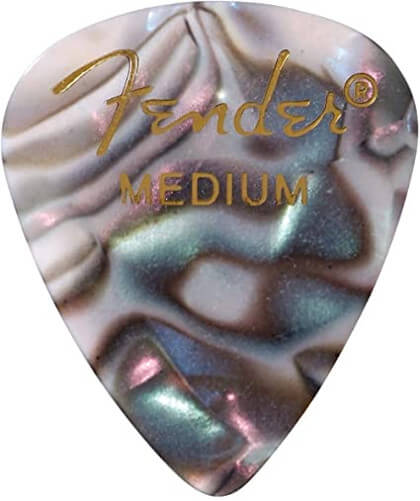
One of the first materials used to make a guitar pick, this one is still very popular today. This synthetic material was introduced as a means to replace tortoiseshell. It also proved to be far more convenient.
Also, celluloid picks are less likely to chip or flake than those that were made from other materials. The biggest factor in the popularity of this type is that it makes a very bright, crisp tone on the guitar.
Nylon Guitar Picks
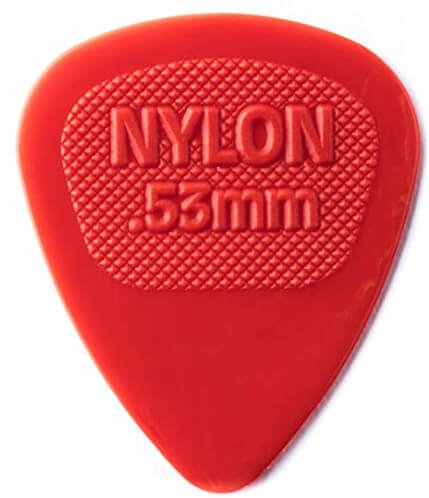
Most commonly seen in the Dunlop Max Grip picks. Nylon is a heavy-duty material that offers guitar players more durability. More so than other options. This makes it perfect for strumming chords.
Since it isn’t slick like celluloid. Nylon also allows for more accurate playing and better grip when moving up and down the neck. This material is capable of providing a warm or bright sound. Depending on how it’s struck against the strings.
Delrin/Tortex
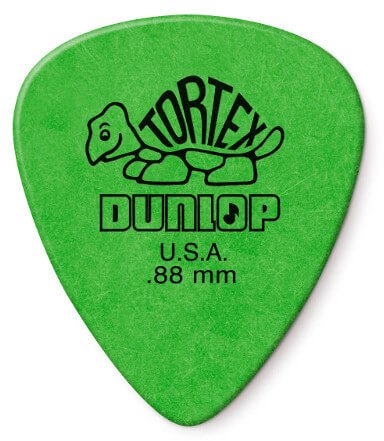
This material is most commonly seen in the Dunlop Tortex pick line. This heavy-duty plastic offers guitarists a grip that feels firm. Allowing for faster playing with less fatigue on top of producing a good, bright tone.
It also has a high tolerance for use over time without showing too much erosion. This makes it very popular among professional guitarists.
There are some Delrin picks made that are not quite as easy to grip, however. While still being made by Dupont. This style of the guitar pick, even though made from the same material as Tortex, is smooth. Under the right conditions, losing grip is easier.
Ultex
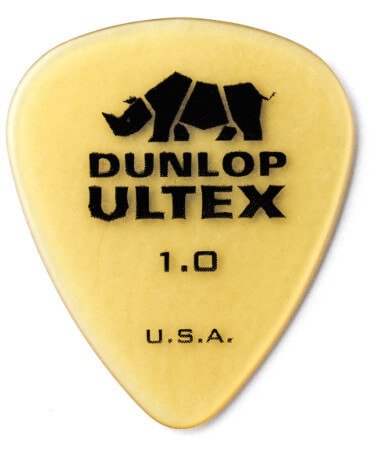
This material is known for being extra hard, making sure that there are no chips or flaking after heavy use. This means that this material will last longer than other options. At least before losing the ability to produce high-quality performance.
Of course, the hard material also means that there is noticeably more resistance. This can be very useful for strumming chords on acoustic guitar. Or adding some articulation to a lead part on an electric. They offer a good grip and bright, balanced sound.
Carbon Fiber
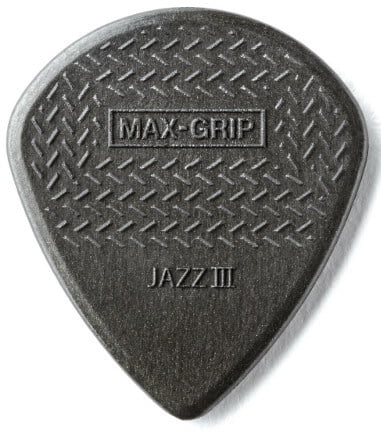
This polymer option is similar to Ultex in that it produces a bright tone with good articulation. But it has the added benefit of being very lightweight.
This material is also incredibly strong. As well as very easy to grip, especially if the texturing is right. It’s a newer concept that is starting to become more popular over time.
Stone

This is one of the oldest materials used for making guitar picks. Many stone types are used to make picks today. Agate, Jasper, and Jade are quite popular and when made right, won’t hurt your strings. Because they are so hard, they produce a unique tone and are easy to grip.
This material is hard to make with consistency. The cost is very high when compared to other options. The stone pick also tends to scratch instruments if there is no guard where you strum.
Wood
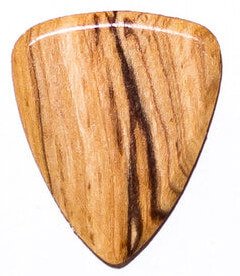
Made from the same material as guitar bodies, wooden picks are extremely low-maintenance. Since wood is very sturdy, it won’t flex like plastic and can be quite thick. They also tend to break down quickly, but can be sanded if needed to create a custom shape for a better grip.
There are many types of wood that are used in making guitar picks. Materials like mahogany or rosewood, so the tone can vary from bright to warm. This also depends on the designs, but in some cases, also makes them harder to use.
Metal Guitar Picks
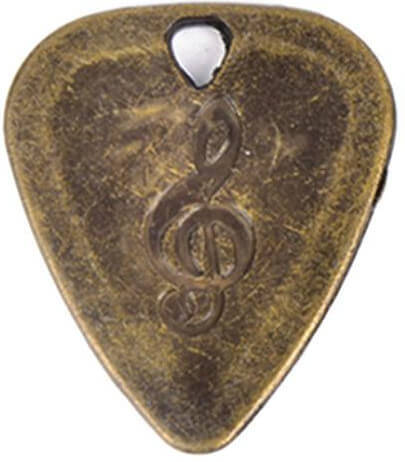
This is another option that tends to be very rigid, but can create some cool sounds when used for picking.
Metal plectrums are not the most common type of pick out there due to their tone and added string erosion. The sound they make can vary in tone based on whether they are plated, but tend to be brighter.
You will also need to be careful not to scratch your guitar, as metal is more capable of this than plastic. Metal picks will also break down. You will also need to watch for any pieces getting attracted to the magnetic pickups. Depending on the metal used.
Guitar Pick Thicknesses
The thickness of the guitar pick will determine how much volume you hear when it’s being used. The right material and shape can also affect this. But in most cases, thicker picks create a tone that stands out more than thinner ones do.
A medium to heavy pick is great for strumming an acoustic guitar. Also for plucking individual notes on electric guitar. For lead parts, you can use a lighter pick and for clean or bass-heavy sections of a song, you can use a thicker one.
There are many styles of guitar picks out there. Knowing how they work and what tone you prefer can help guide your search. Especially when looking for the right plectrum. Also, knowing what type of guitar technique you use, will help to find which ones work best.
There are 5 common thicknesses:
- Extra light
- Light
- Medium
- Thick or heavy
- Extra-heavy
It’s good to test the thickness of the pick yourself. First by holding one in your hand without gripping it too tightly. Testing how much pressure you need before it starts bending.
Extra Light
Extra light picks have a thickness of 0.40 mm and under.
This option is very useful for strumming chords lightly. Also playing fast lines on an electric guitar. Thin guitar picks will glide over the strings without grabbing them too hard. Keeping the sound clean and allowing you to play with ease.
They tend to produce a plastic sound when strumming. This is not acceptable for some players, but this depends on the strings and guitar as well. This thickness will make a softer sound with the lowest volume projection. When compared to all the options available.
Light Guitar Picks
Light guitar picks have a thickness of 0.41 to 0.63 mm.
If you are looking for a pick for lead work or acoustic guitar, light is a good choice. They are sturdy enough to be used for strumming, producing a tone that is louder than extra light. This depends on how hard you use the plectrum, which will also stress it more as they are a thin guitar pick.
This option provides slightly more volume projection than extra light picks do. Although not as much as a medium plectrum.
Medium Picks
Medium guitar picks have a thickness of 0.64 to 0.86 mm.
This pick is a good choice for strumming chords and lead work. They are sturdy enough to glide over the strings. But thick enough to generate a tone that stands out from an extra light pick. This means it won’t be as bright or clean as the medium thickness.
I take this pick as a good combination of brightness and strength. This makes it perfect for a beginner when starting.
Thick Guitar Picks
Thick picks have a thickness of 0.87 to 1.2 mm.
This type of pick is a good choice for strumming chords and lead work as it creates some rich mid-range sounds. The thickness also adds volume compared to a medium plectrum. It provides a solid attack which is great for heavier music.
Because of their added stiffness, they need more finger strength to keep a solid grip. Otherwise, when playing aggressively, it’s easy to drop them due to the lack of flexibility.
Extra Thick
Extra thick guitar picks have a thickness of 1.21 mm and over.
This type of guitar pick will produce a fat, warm tone when strumming chords or performing lead work. It’s a good choice for a beginner who wants to sound strong from the start. While also being able to play a wide range of music and use different techniques.
The thickness makes it harder to glide across the strings without touching them. This is why you will need slightly more strength than medium picks to prevent dropping them. But the volume is at its largest when you strum with an extra thick pick!
Guitar Pick Shapes
It’s important to note that the shape of your pick can also contribute to your tone. Also, your technique execution. Several shapes can help with some interesting sounds. Some are not normally possible with others.
Standard
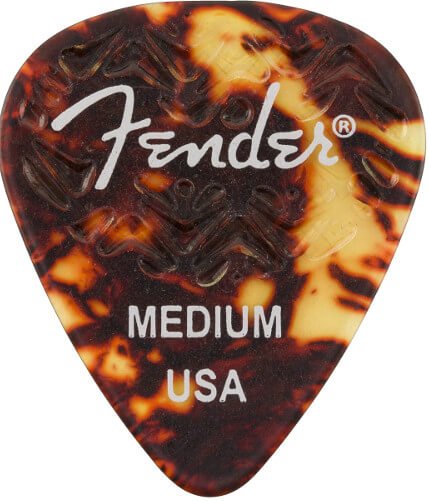
This is the most common guitar pick shape. One edge is more rounded than pointed. This allows you to play chords with ease, while also making it possible to perform lead lines.
It’s somewhat of an isosceles triangle shape. This is where it all started with the first cellulose plectrum. This shape is referred to as the 351 and is very versatile.
Jazz III
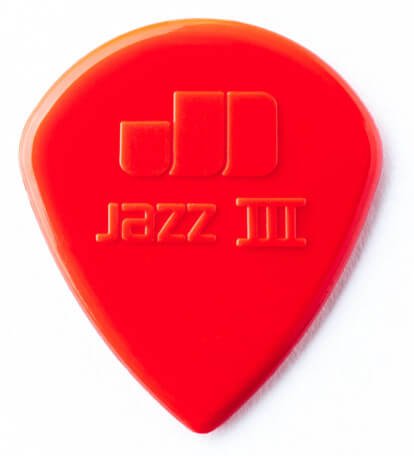
This shape is somewhat of an equilateral triangle. It’s easier to get a brighter tone than a standard pick, which makes it great for strumming.
It has quickly become one of the most popular shapes among players. Those that lean towards lead work over strumming. Especially in shred metal music styles where fast lines are needed to keep up with the speed of the drums.
Sharp Point Picks
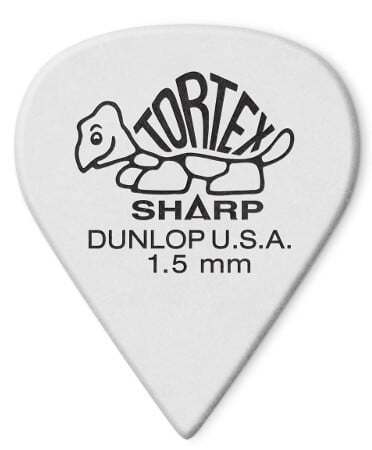
This shape is a standard pick with a point that is very close to being sharp. This allows it to glide over the strings while still maintaining a decent grip.
The sound projection is not as strong as a regular guitar pick, but is used for lead work more so than strumming. The sharp point is great for accuracy and precision.
Triangle Shape
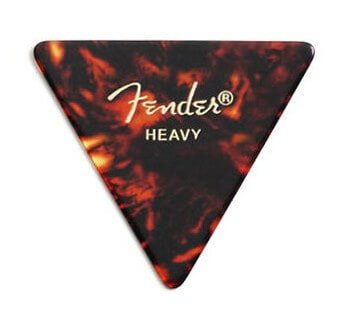
There are several triangle-shaped picks available. Some with very sharp tips, and some with more round ones.
They each have something to offer players, but are all able to increase control due to their larger size. Bass players favor these picks because of the extra control and dexterity they offer. Plus they are more comfortable.
This shape has also become known as the Triforce pick as a reference to the Legend of Zelda video game. So if you hear this term, you will know the pick shape.
Teardrop-Shape

This style of guitar pick is designed for accuracy and speed. But it requires more finger strength to use properly. They are thinner to be able to use without dropping frequently.
This also makes them pretty versatile when some strumming is also necessary. They are also known as model 358 and are known for a warmer and round tone.
Finger and Thumb Picks
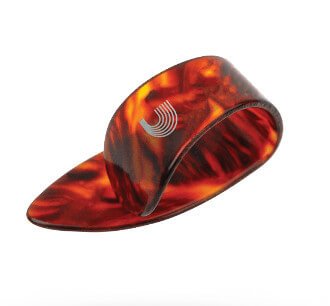
There are various styles of finger and thumb picks available. They each offer something unique. Most of them give great control and tone.
All while still allowing you to use your fingers to pluck the strings with ease. Finger and thumb picks are often used in bluegrass music. They allow the player an extra grip for that classic sound.
Shark Fin
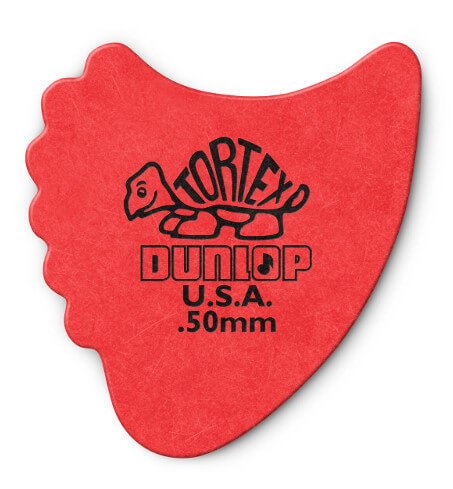
This is shaped like the top fin of a shark. The tips are sharp and are perfect for speed-picking techniques as well as strumming.
Each tip can produce a different sound. It makes them popular with musicians who want warm and bold tones. They are not easy to use and do take some time, so they are not recommended for beginners.
Dragon Heart
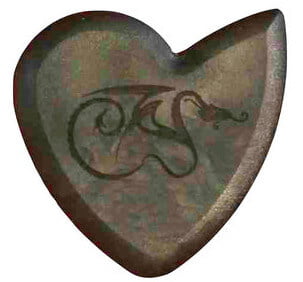
This is a super unique pick shape and is great for players who need both strumming and a lead plectrum.
This guitar pick is thicker with beveled edges and is for people who play heavier music. Electric guitar players that need loud, bold sounds. One edge is great for speed, while the other is perfect for rhythm.
Guitar Pick Textures
Guitar picks can come in a variety of textures, ranging from smooth to small ridges. The texture is totally up to personal preference and the grip you need to prevent dropping picks. Yet, the pick you choose will also determine how much control you have over your playing style.
Smooth Texture Picks
A smooth plectrum has no texture and slides through your fingers easily. Especially if you begin to sweat.
A majority of the picks made are smooth or polished and are normally easy to hold. Are you having issues with your grip and continuing to drop them? Then you may want to change the plectrum texture you are using.
Sanded Texture Picks
A guitar pick with a sanded or powdery texture is generally easier to hold. This is because it has something for your fingers to grip. The difference between this and the smooth pick is easy to notice.
It will help you keep a grip on your plectrum, especially if sweaty, slippery hands are an issue for you. Tortex picks offer this extra support, which is why they are a more popular plectrum.
Raised Ridges Picks
A plectrum with raised ridges is considered a medium-textured pick. It offers the best of both worlds. Your fingers can easily slide and move around on it. This way, you won’t have to worry about gripping too hard and having it interfere with your technique.
But they also offer you the benefit of having ridges to grip onto when things are getting slick. Sometimes it’s simply a raised logo on the pick that makes all the difference.
Other Textures
Then there are natural textures provided by materials like wood or stone. Some of these different materials can help with grip. But they are also very different from one another. Some wood picks will have less texture than others.
While stone guitar picks, if porous enough, can offer a great deal of added grip. When selecting a material to try, it’s also good to keep the texture in mind. Just in case you cannot hold on to it when playing.
Custom Guitar Picks
There is a whole world of many types of guitar picks out there that can help you find the sound and look you are going for.
After playing for a while, it’s also possible that your fingers have adapted to all the practicing. Making it even more important to explore different picks and textures.
Companies like D’addario provide custom guitar picks that allow you to shred in style! They offer many personalized plectrum options like:
- Single color pad print
- Full-color laser prints
Guitar players can select options like size, shape, thickness, and even materials. Things like nylon guitar picks to print their logo or pictures on. So if you are an artist looking to create a career, having your own custom plectrum is a great way to make a statement
Suggested Picks for Certain Music Styles
Below you will find a table of picks that work great with certain styles of music. These are simply suggestions if you are not sure where to start. Finding the right pick for you comes from trying them out, of course.
Further learning: what picks do the professionals use?
| Music Style | Pick Size/Thickness | Pick Shape |
|---|---|---|
| Blues | Heavy (0.88 mm or thicker) | Standard |
| Jazz | Medium (0.73 mm) | Jazz III |
| Rock | Medium or Heavy (0.73-0.88 mm) | Standard or Sharp point |
| Folk | Light (0.46 mm or thinner) | Standard or Jazz III |
| Country | Medium (0.73 mm) | Standard or Tear Drop |
| Metal | Heavy (0.88 mm or thicker) | Sharp Point or Dragon Heart |
| Fingerstyle | Thin (0.50 mm or thinner) | Finger and Thumb |
| Classical | Nylon | Finger and Thumb |
How To Select The Right Pick For You
Before you choose a pick, it’s important to think about what you are planning on playing. Plus the technique involved.
If heavy metal is your game, then perhaps the shark fin shape would be best for you. But if jazz is more your style, then maybe try using a rounded tip for warm sounds with less attack. If you are a beginner, stick with a standard shape of medium thickness.
Thin vs Thick Picks
Thinner guitar picks are perfect for faster players. Those who need to control their plucking style. The thinner the pick, the more you have to pay attention to each stroke.
This will help to keep it consistent so that your sound doesn’t change drastically. However, thicker plectrums are great for strumming chords! They will give you a fuller sound with a more aggressive attack.
Thickness & Dexterity
Does your guitar playing involve complex finger-tapping? Or are you simply having an issue holding on to the pick? Then you may want to adjust the thickness. Again, this is all about your style of play and what kind of dexterity you have.
Some people just cannot handle the thickest plectrums due to their dexterity. While other guitarists need that extra thick grip to play at faster speeds.
Tone Considerations
The thickness of your pick also plays a role in what kind of sound you get out of it. When choosing something new, always try playing with it on a guitar before buying it. Just to get a general idea of the tone you might expect.
Simply hold down some basic open chords and see how it sounds compared to the picks you are used to using.
FAQs
Which pick is the best for strumming?
Looking for something that will give you a good, consistent strumming sound? Then most plectrums are geared towards this type of playing. Yet, if you are specifically looking for one that is durable and tough. Then medium-thickness, nylon picks are a great choice.
It’s normally a good idea to try a bunch of different plectrums and see what feels the best in your hand. Picks are pretty affordable. It’s easy to collect some for different techniques and play styles.
What thickness should I get?
If you need something that provides a ton of grip, then thicker picks are the way to go. For players with dexterity issues, the simple solution is to get something thick and wide. But if you need more control over your sound, thin picks will help you out there instead.
Then there is the music style you play. An aggressive rhythm part may need thicker picks for a bold tone. Plus plenty of projected volume.
The harder you dig in, the more vibration you will get from your strings. A thicker pick can help with this. Yet, a thinner plectrum might be better for acoustic guitar strumming. It’s warmer and softer.
What guitar pick size should I get?
This is a matter of personal preference. Some people might feel that something larger or smaller is better suited for them.
Normal-size picks are usually pretty comfortable for most players. But those with bigger hands may want to go up from there. Triangle-shaped picks are preferred by most bassists. This is because the size helps with grip and comfort.
The best way to find the right fit is to get a few samples for each of the play styles you like. Start with some of the more standard guitar pick sizes and then get a few larger as well as smaller ones. Then try them out for the different styles and see which are the most comfortable.
What is the best guitar pick thickness for beginners?
A good place to start is with a traditional nylon 0.71 mm pick. But if you find that these are still difficult to hold on to, you could grab a 0.80 mm plectrum instead.
Tone-wise, these are typically pretty bright with plenty of high-end clarity. It will be easy for you to hear the different notes being played. Maybe you are looking for something that is durable and comfortable. Then thicker picks are always better choices.
How can I tell what thickness my guitar pick is?
The best way to find out the thickness of your guitar pick is to simply measure it. If you do not have a means of measuring it, then see if it’s labeled. Sometimes it is clearly marked on the pick.
If not, then you can place the pick next to another on a flat surface and run your finger over them both. You will then be able to determine if the pick with the unknown thickness is higher or lower than the other.
If it’s higher, then it is thicker. If lower, it’s thinner and will help you determine roughly what category it may fall in for size.
What is the best guitar pick material?
Two popular materials used in making guitar picks are nylon and Tortex (or Delrin). Nylon thin to medium-thickness picks give a nice crisp sound. It also has a smooth release from the strings. Tortex picks have a little more bite, but they do not last as long and will wear down faster.
Both of these materials are great for most styles, so it’s just a matter of personal preference. Try out both types to see which is more comfortable in your hand and offers you the sound you want when playing.
What is the best pick for an acoustic guitar?
For strumming, using a thin to medium nylon pick will be great. On acoustic guitars, you do not need to worry about volume as much since the sound is naturally amplified. So anything around 0.80 mm or even thinner picks are usually sufficient for this purpose.
If you choose a very thin pick and get a plastic-like sound when strumming, this may be a bit too slim. Some guitar players are bothered by this tone and decide to use thicker picks as a result.
Others do not notice and are fine, but it’s good to know this when selecting thin guitar picks for the acoustic.

